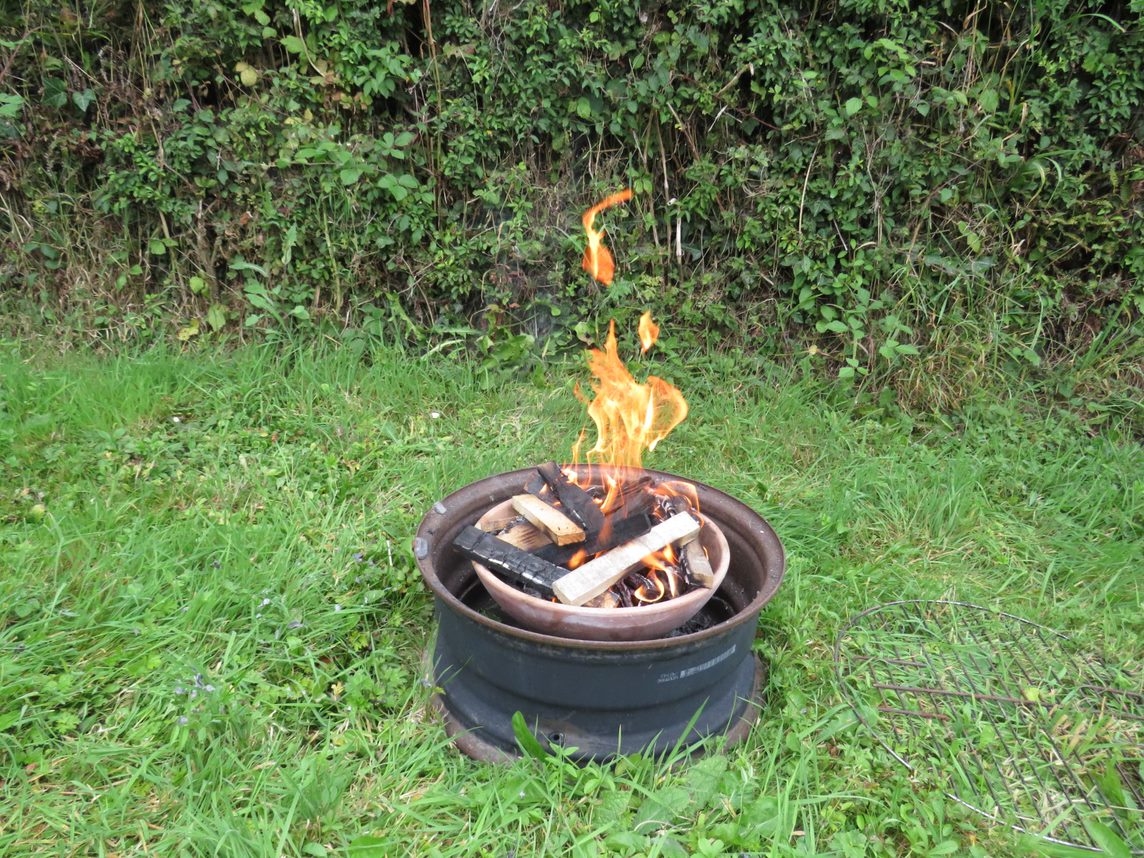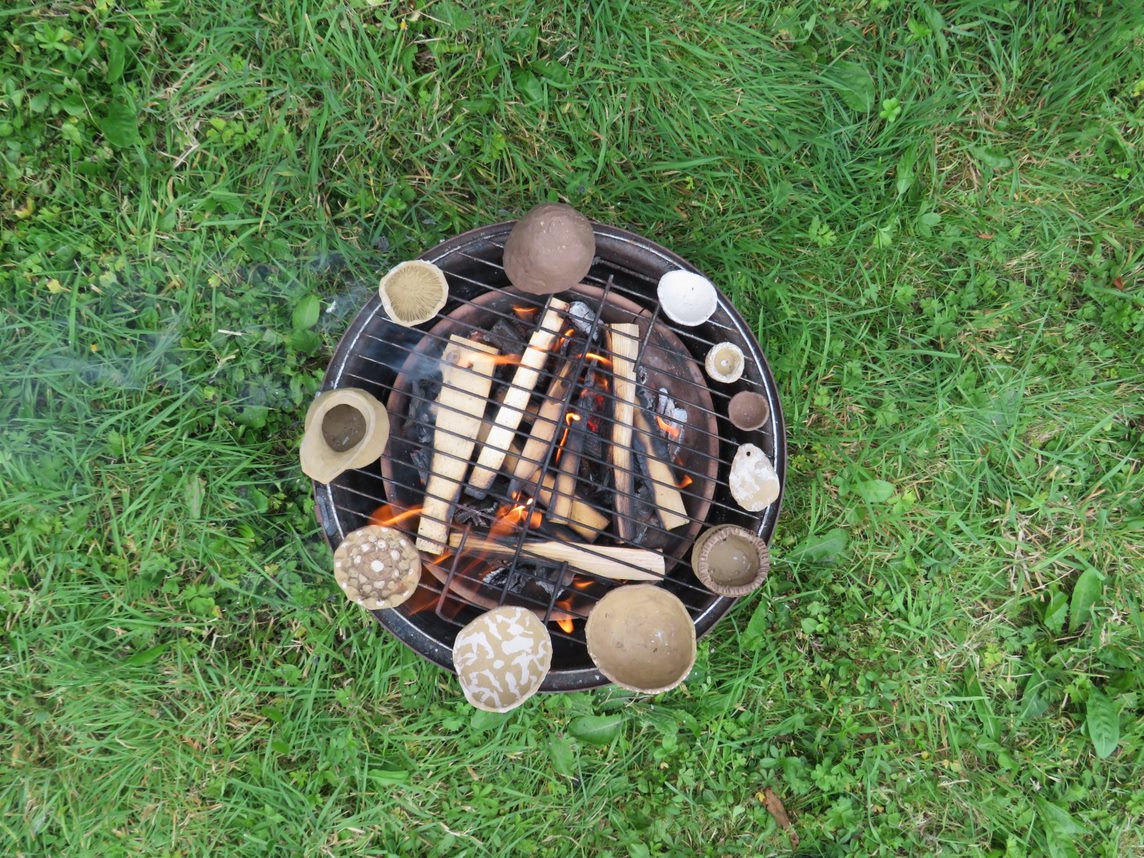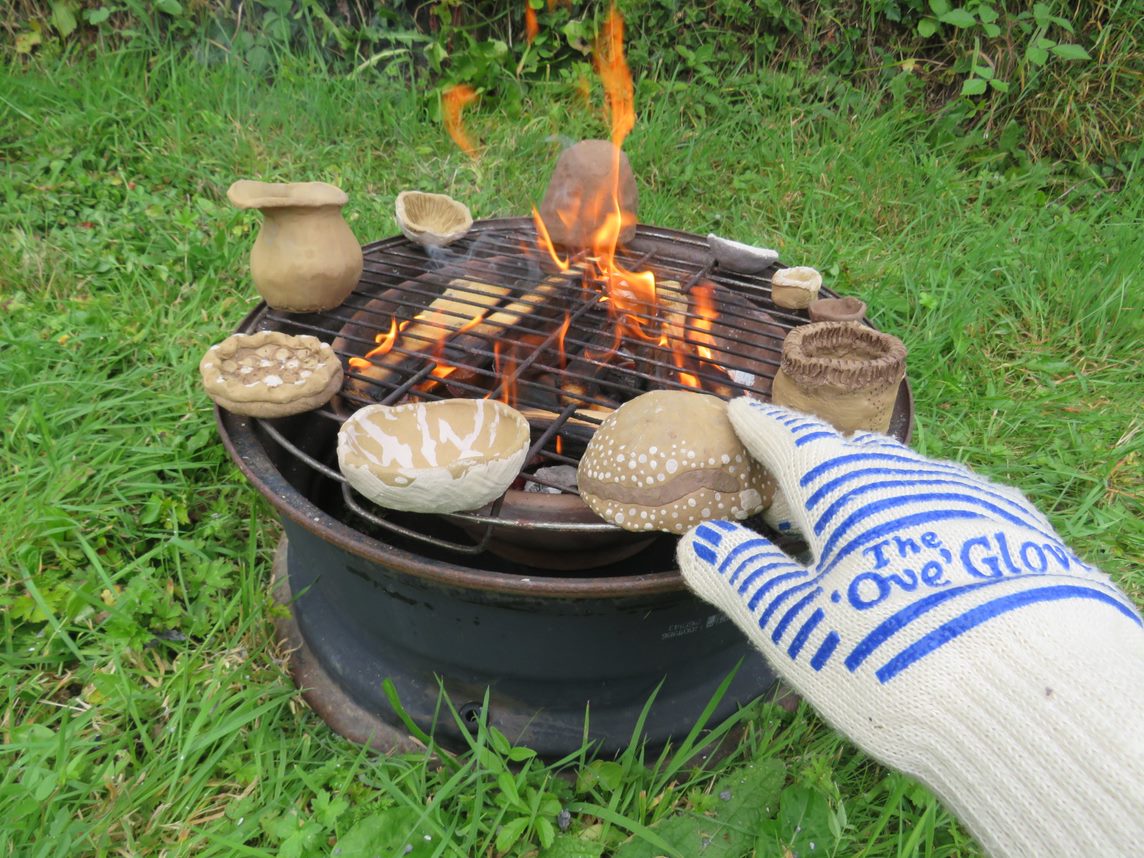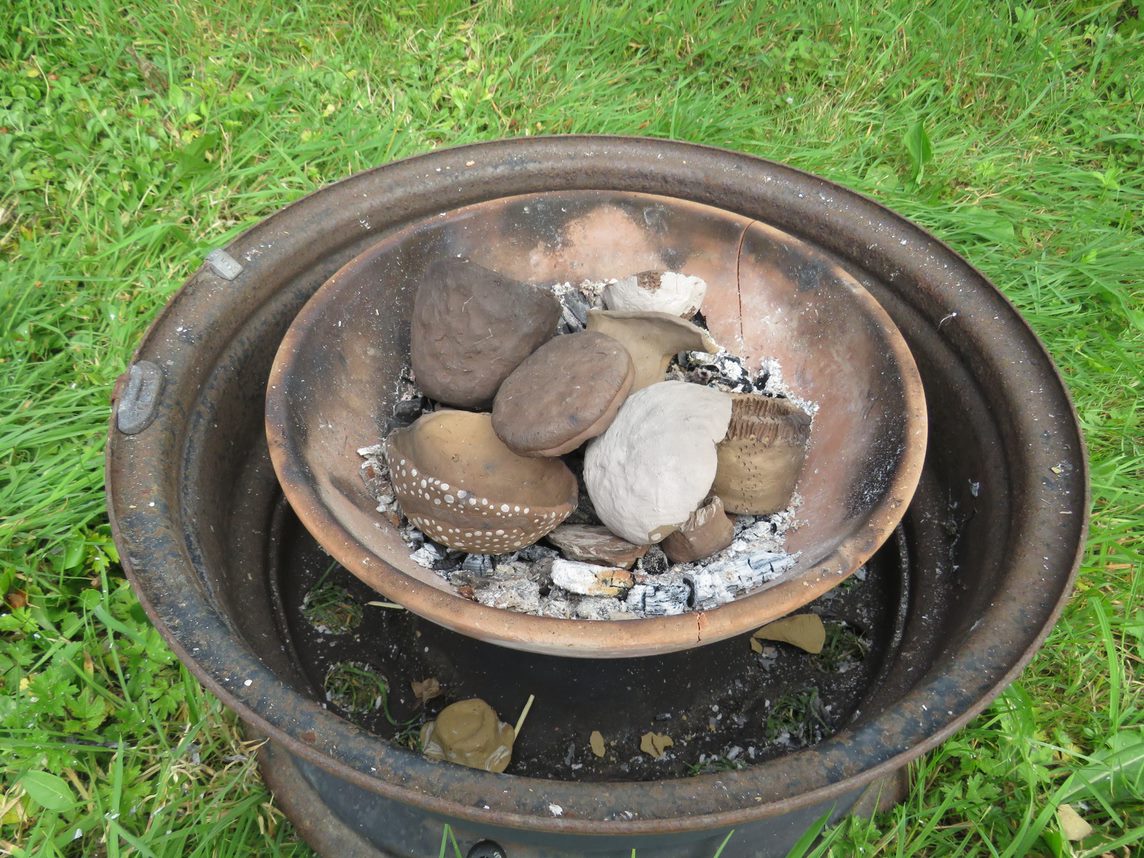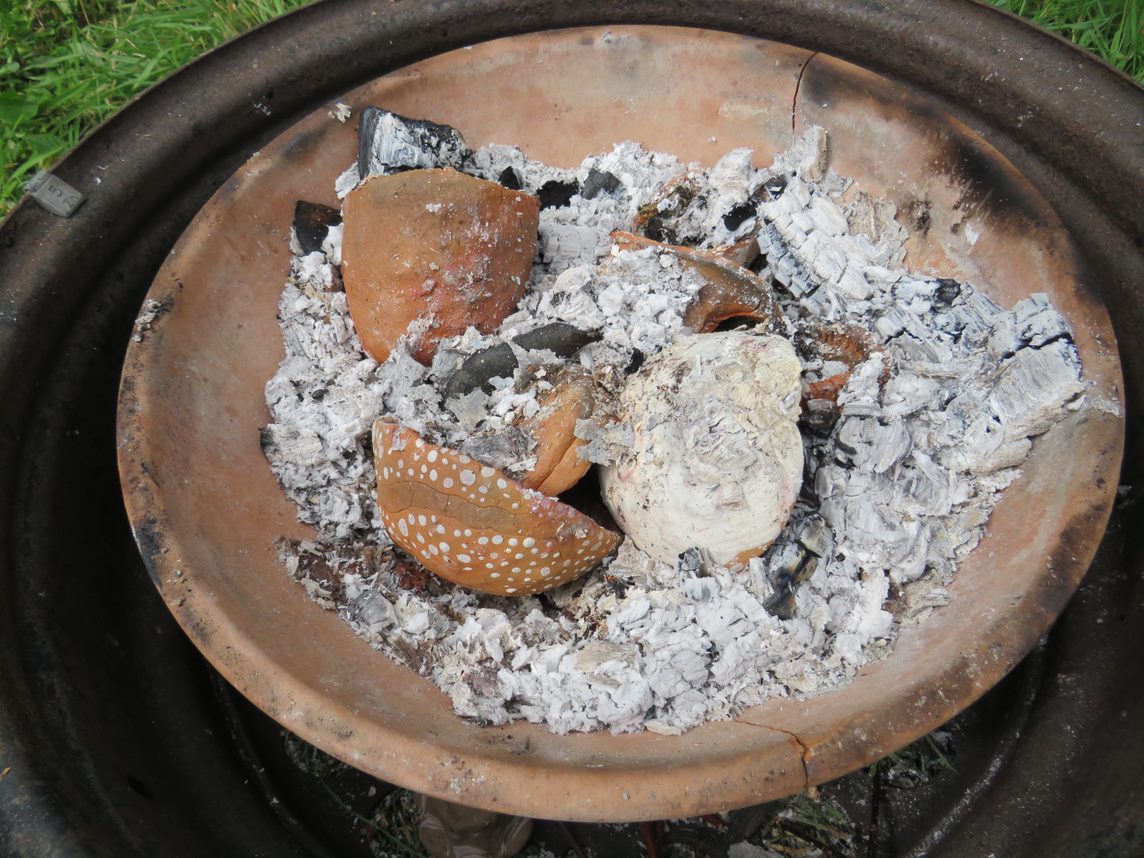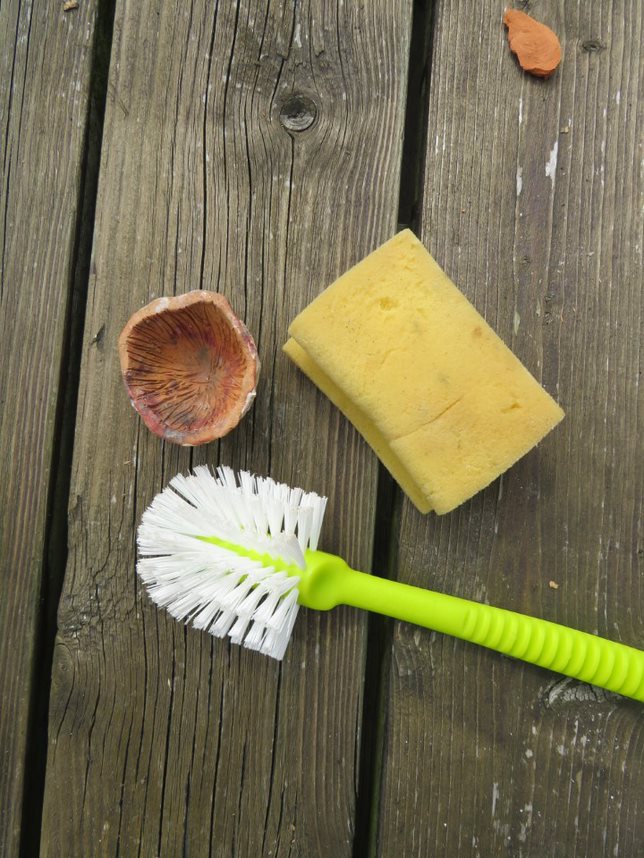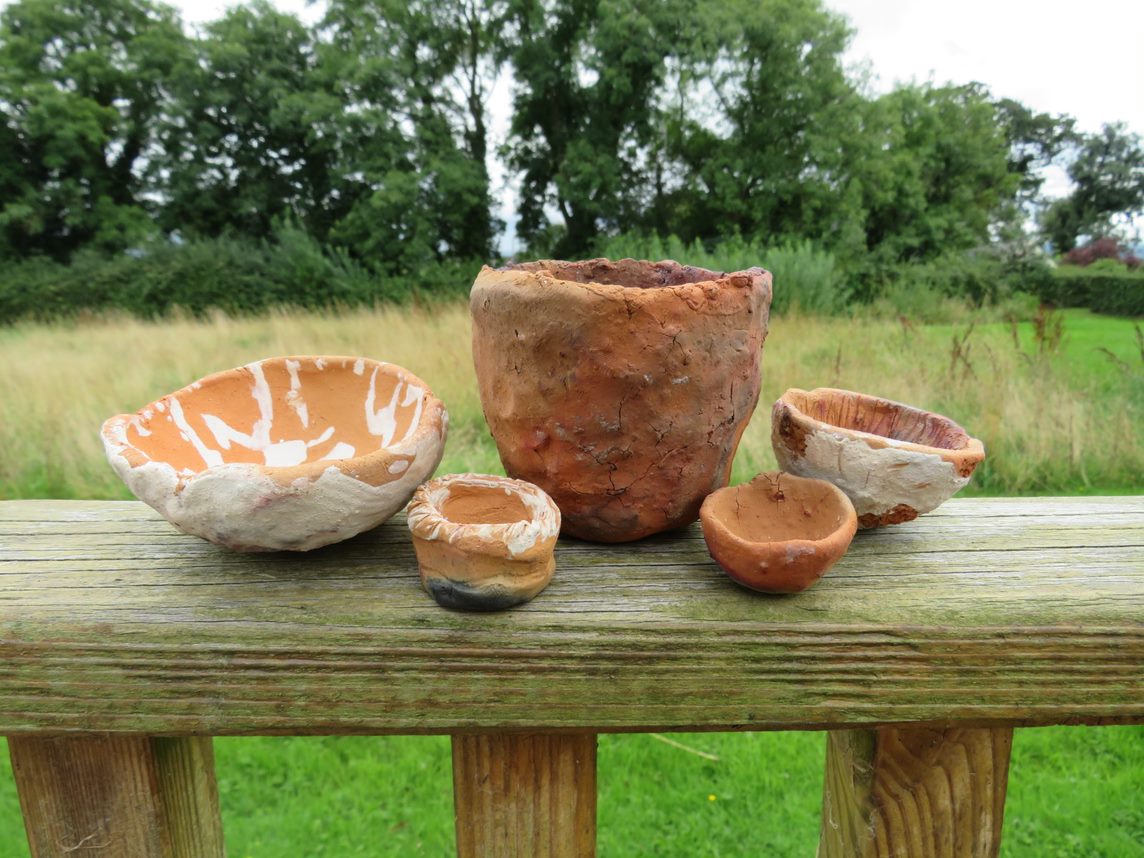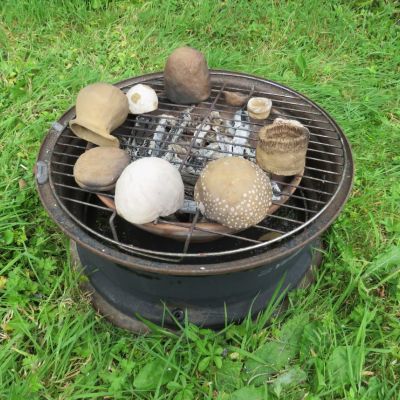Intro
It is possible to fire either commercial or wild clays without the use of electric kilns or complex firing structures. Bonfire firing ceramics is the oldest method of turning clay into ceramic and is still practised widely today.

Materials
- Bone dry clay work
- Light wood to make a fire (e.g. broken old pallets, small dry sticks)
- Newspaper and matches to light fire
Equipment
- Good heatproof gloves or tongs
- Stiff brush and damp sponge
- Fire pit or safe space to make outdoor campfire
Method
- There are countless variations on this method, but these are the basic steps.
- Build a wood fire and light it. You can dig a hole and make a pit, you can use a campfire, a fire bowl.... I improvised with a ceramic flowerpot, a wheel rim and an old BBQ grill! Note that it is important to have a space around the edge of the fire to place the clay work to heat and dry.
- Dry and preheat clay work to be fired beside the fire, turning regularly to ensure even heating.
- Slowly move the clay work closer to the fire as it heats and dries. This process can take up to 2 hours depending on the size and thickness of the work. If it heats too quickly it can crack or explode You will need gloves or a tongs for this, the work will get very hot as they near the fire.
- Allow fire to die down to embers, by this stage your clay work will be at the very edge of the fire and be very hot. You may see it start to change colour.
- Carefully place preheated clay work in the embers of the fire. Be careful how you place them, they can move or fall in the fire as it burns.
- Relight fire on top of the work and allow to burn out. This can take 2-3 hours depending on the fuel and size of your fire.
- Allow to cool completely before removing the work.
- Clean off any ash or dust with a stiff brush and a damp sponge.
- Admire your work and the colours produced through the combination of earth and fire.
Notes
When staring out its best to work with small pieces, as they dry quickly and are less prone to breaking in the firing process.
When making a form for this type of fire it's best to make something simple and curved, like a bowl as this is less likely to break due to movement in the fire than something flat, like a tile.When making work, keep the walls of your work an even thickness. This is because the thin part will dry and heat more quickly than the thick part, and they can break apart
Preheating the clay very slowly and evenly is the most important step of this process. If this is not done the clay may shatter due to steam building up or thermal shock.It is important to the fired ceramic cool completely before removing it from the fire, if it is removed to quickly it could crack due to thermal shock.
If the work cracks or shatters during the firing there are a few possibilities why:
1. the clay was not dry enough and steam escaping caused it to fracture
2. it was not hot enough going into the fire and it cracked due to thermal shock (heating up to quickly)
3. It moved during the firing process, or something fell on it and broke it as the fire burned down.
4. If you are using found clay there may have been an inclusion it it, like a small stone, that expanded due to heat and fractured or shattered the work.
